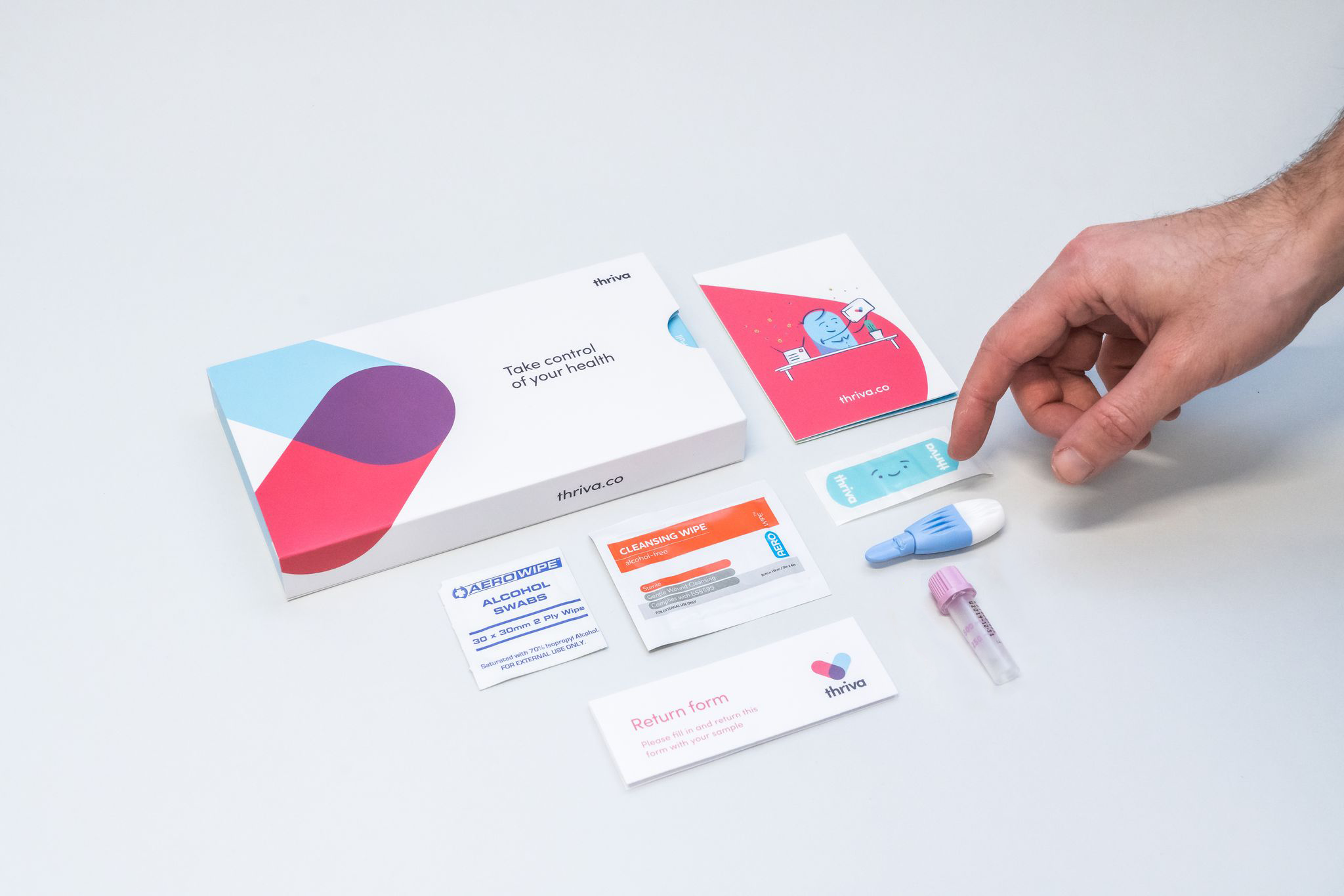Can blood testing kits help triathletes?
For less than a pair of run shoes, Thriva’s home blood-testing services promise to transform your 2022 triathlon performance. Our interest was piqued and our finger pricked…

Triathlon attracts individuals who like a challenge, who like to maximise every advantage and, of course, who love gear. My, how we love gear. Swathes of curvaceous carbon rolling upon deep-rim works of art, wetsuits that slipstream through the water and featherweight run shoes.
It’s all in the name of speed. But what about you? How much do you invest in your physical self? It’s time to discover the triathlon benefits of blood testing…
A swift turnaround
Thriva, partners of Super League Triathlon, is a home blood-testing service designed to lift the lid on your health and performance by analysing numerous proteins, hormones, vitamins and enzymes that have been scientifically proven to impact your triathlon outcome.
We’re talking testosterone, iron, vitamin D… but we’ll elaborate on that shortly. For now, let’s dig deep into the process, from testing to analysis.
Firstly, head to the Thriva website and choose the blood test that’s applicable to you as a triathlete. In a blink of an eye – well, no more than a couple of days – your kit arrives. Now it’s onto the bit that might cause concern for some: the blood test. Fear not, as it’s incredibly easy and barely perceptible.

Simply lay out the contents of your Thriva box on a flat surface, ensuring your hand’s below your elbow – gravity helps your blood flow. Warming and scrunching your hand also helps.
Then, using the miniscule lancet, prick the corner of your fingertip (the ring finger’s ideal). No grimmacing’s required as you won’t feel a thing. Then massage your hand downwards to squeeze your blood into the included tube.
Once you’ve deposited sufficient blood for analysis, simply click the cap on, swirl the tube a few times before packaging it up and posting in the pre-paid envelope. One of Thriva’s experienced doctors then analyses the results. And, in our experience, they do this swifter than a Brownlee out of transition, with our online dashboard being updated within two days of posting.
The results
My test was all about improving performance and recovery, so Dr Kenneally analysed testosterone levels, iron stores, liver function, and vitamins D and B12. Why these, you may ask? Good question…
Testosterone – the triathlon hormone
I’m sure we’re all aware that testosterone’s a male hormone, but are you aware it’s responsible for myriad processes associated with peak triathlon performance?
As a snapshot, these include increasing muscle mass, helping you to burn fat more effectively, bolstering bone density and even influencing your competitive spirit. In short, it’s important.
The problem is, testosterone levels drop by both age and when endurance training for hours on end. I’m 45 and train for around 8-10hrs a week so the alarm bells were ringing. Thankfully, I came in at 14.57nmol/l, which was normal, albeit it could be higher. (Every variable measured falls within a low, normal or high range with some parameters rating optimal, too.)
To that end, Thriva offers advice on how to boost flagging levels of hormones and vitamins. When it comes to testosterone, an anabolic exercise like weight training helps. As testosterone levels have been shown to drop by 1% a year from the age of 40, weight training should become an ever-greater part of my triathlon training as the years roll by. More, better-quality sleep should help, too.
Ferritin – oxygen must-have

Ferritin’s a protein that stores iron and releases it when needed. That’s why ferritin’s a useful indicator of your body’s iron status. And that’s important because iron’s needed to make haemoglobin. This is a protein in red blood cells that carries oxygen from lungs to every part of your body.
The impact on triathlon performance is clear, as our body demands huge amounts of oxygen to create energy to help us race longer, faster and stronger. Those oxygen supplies are in shorter supply, however, if iron levels are low, which is especially common in female triathletes because of blood loss due to menstruation. Through a triathlon lens, this can mean sub-optimum performance. Through a clinical lens, this could result in anaemia.
My iron levels came back as 48ug/l, sitting in the optimal range. Arguably, that’s down to my naturally iron-rich diet of red meat, dark green leafy vegetables and nuts. This seems to have countered the potential negative impact of caffeine – I drink too much coffee! – which impairs iron absorption. An iron supplement is an option if your levels are low but, as always in the world of nutrition, the first port of call should be a healthy, nutritious diet.
Liver function – total performance
Proficient liver function equates to more energy, better weight management, higher fitness, more proficient sleep and even a happier mood. But it’s an organ under a huge amount of stress as it’s responsible for your body breaking down toxins, which increase during exercise.
The liver’s also responsible for producing enzymes, which catalyse reactions all over the body, as well as storing vitamins and maintaining hormone balance. If your liver’s not functioning as it should, it’ll certainly show in your triathlon performance.
Its importance was highlighted in my test that focused on seven different enzymes and proteins related to liver function. These included bilirubin, alkaline phosphatase, gamma-CT, total protein, albumin, globulin and alanine transferase. Despite my love of IPA and a glass or two of vin blanc, my levels across the board were either normal or optimal. Just as I was going to go tee-total as well…!
Thriva also tested my vitamin-D and B-12 levels. Both were normal. I was particularly pleased about the vitamin-D results as it’s synthesised in the skin by sun exposure. There’s little of that in a UK winter so I’d supplemented daily since October.
That seems to have done the trick as there’s very little found in food. How much that’s contributed to me remaining healthy throughout the off-season – needed for consistent training – remains to be seen. But the science suggests it certainly did no harm.
Conclusion

Thriva’s home blood-testing kit isn’t as headline-grabbing as a £10,000 bike, but arguably its impact on your performance is even greater. By drilling down into the nutrients, hormones, proteins and enzymes associated with triathlon excellence, you’re given an insight into the effectiveness of your training, diet and general wellbeing. Which, of course, can vary over time, which is why it’s recommended you take a test at least every three to six months.
You might even pencil in tests more frequently as hard training strains and drains many of these variables. It’s certainly fiscally feasible, as our test was £69.
Whichever test and variables you choose to have analysed, you can currently get 20% off by using the code TRIATHLON20 at the online till. Just head to the Thriva website for more.




